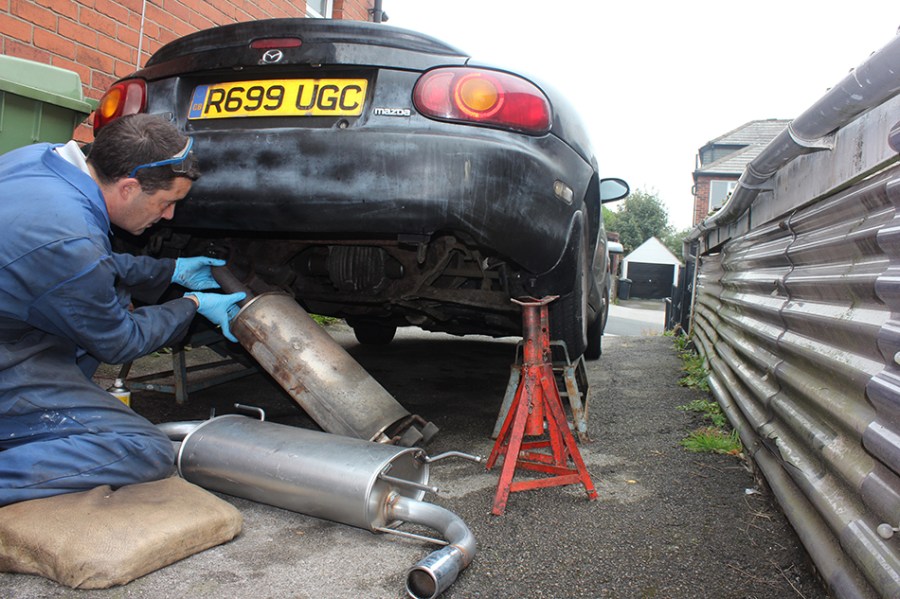If your car’s exhaust sounds like a tractor, follow our guide on how to fix a blowing exhaust to find the problem and fix it.
A blowing exhaust can be a bit of an embarrassment. It may sound loud, but to most people it’s hardly the music out of the exhaust on a performance car. Plus, you could get stopped by the police, no matter where you are in the world.
A blowing exhaust can be caused by a wide range of problems, so we’ll examine each one in detail. And perhaps the best starting point is to identify exactly where it’s coming from, which isn’t always so easy.
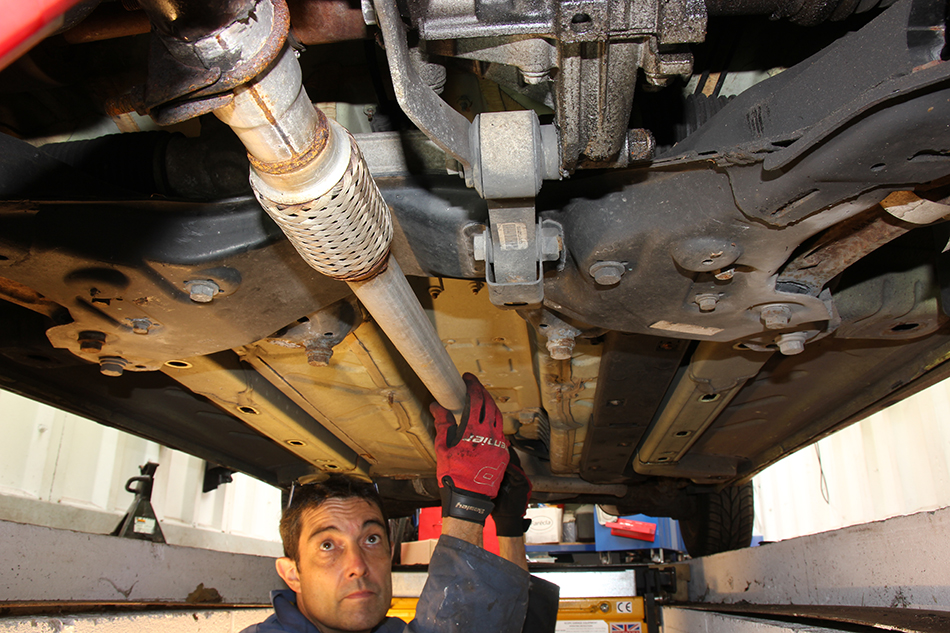
Where’s the exhaust blowing?
The noise from a blowing exhaust can be difficult to trace. Sound can bounce around an engine bay or underneath a car, making it difficult to track down. Providing the exhaust system isn’t hot, placing a hand close to where you think it’s blowing can help to feel for the problem. Air blown out of the exhaust can be detected.
If you have heatproof gloves, it may be safe to hold the exhaust where you think it’s blowing. This will help to muffle the bit that’s blowing and find the cause.
Spraying soapy liquid over a join or where the exhaust manifold mates to the cylinder head can also help. If air is blowing out of where you spray, it will be easier to spot the soapy liquid. This may turn into frothy bubbles, which are even easier to see.
When looking for the source of a blowing exhaust, remember that the fumes are dangerous and harmful. So make sure there’s plenty of ventilation.
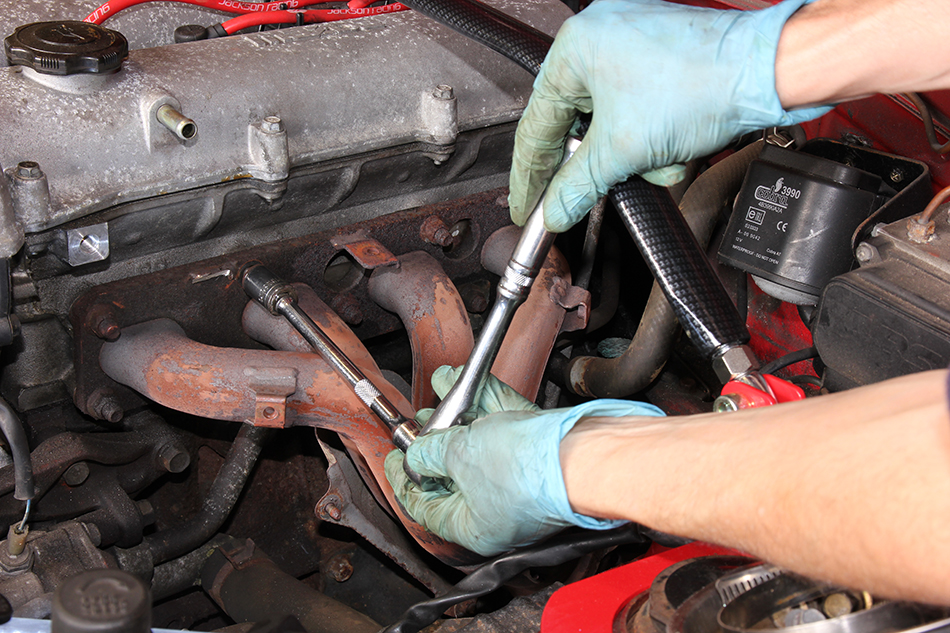
Exhaust manifold blowing
If air is escaping from where the exhaust manifold is secured to the cylinder head, it’s usually fixable. The gasket for this manifold may have failed, which means the manifold needs to be detached. However, our first suggestion is to check all of the nuts or bolts securing the manifold are tight. This can often help to fix a leak, but not always. Don’t overtighten these nuts and bolts, just nip them up to help seal the manifold against the cylinder head. And don’t leave the engine running when tightening these fastenings. The heat can help, especially if they are rusty and possibly seized, but moving components are dangerous. And avoid getting burnt on the hot exhaust manifold.
If the exhaust manifold is still blowing at the cylinder head, fitting a new gasket is our next suggestion.
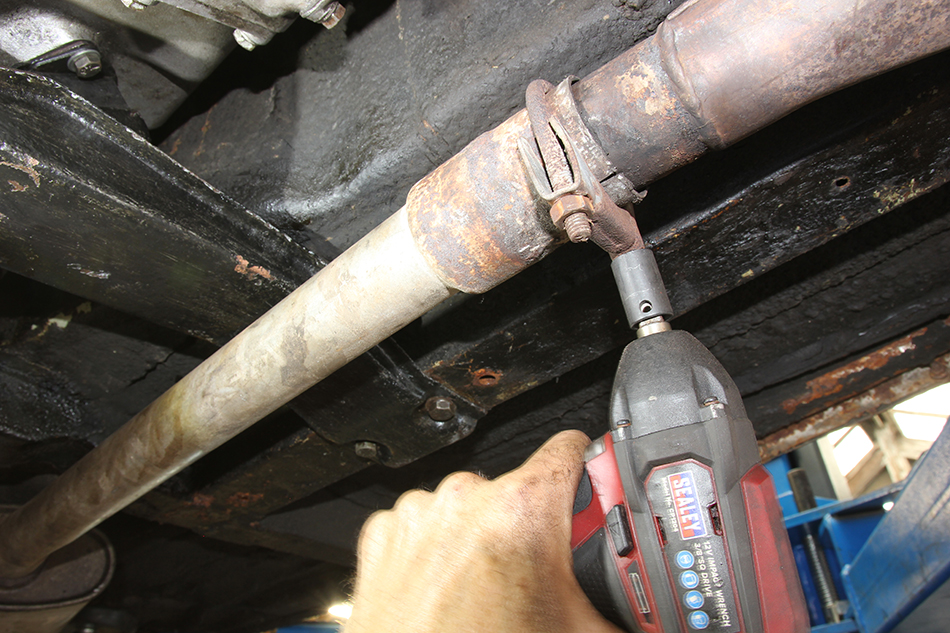
Loose exhaust clamps
If an exhaust is blowing from a join, it may be possible to tighten that connection to seal it. Exhaust clamps can sometimes rattle loose. Or perhaps the wrong size of exhaust clamp is fitted, which means it won’t seal the connection.
Dismantling a clamp can help to check if it’s the correct size and if it needs replacing. A larger clamp may provide a stronger seal.
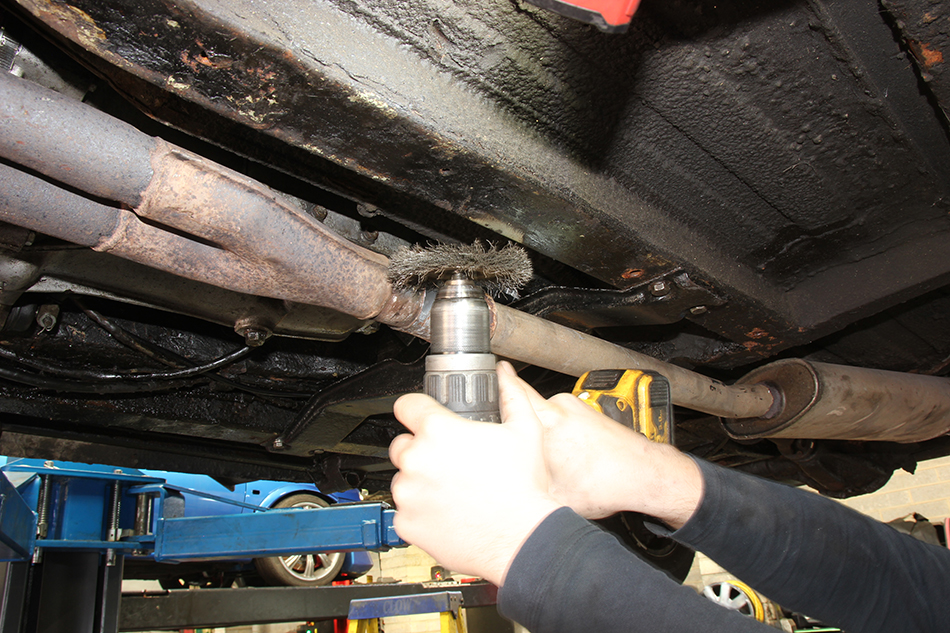
Pinprick holes
A small hole can be the cause of a blowing exhaust and it really doesn’t have to be too big. Finding such a hole can be difficult, but our soapy water method can help. Once you’ve found a hole, clean the area with a wire brush or wheel to examine it. This will help to see if and how you can repair it.
Exhaust bandages
An exhaust bandage is a quick fix for a blowing exhaust. It’s ideal for muffling small holes, but can’t fix an exhaust that has rotted in two. It’s essential to clean the area where you intend to fit the bandage. Some bandages need to be fitted wet. Wrap it around the area to repair it. It may help to fit cable ties afterwards.
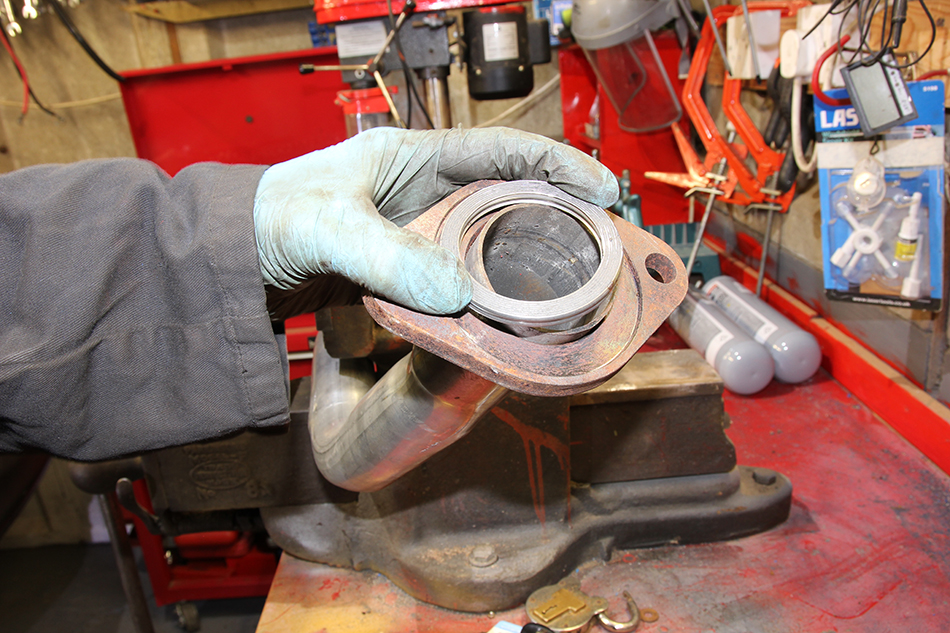
New gaskets
Where a join in an exhaust is leaking, it may help to tighten any clamps or other fastenings. If that doesn’t help, what next? Where a flange is fitted, there may be a seal or gasket that you can replace. This will involve separating the join where the exhaust is blowing. However, it may not mean that you need to remove the exhaust system. Providing there’s room to separate the exhaust and replace the gasket or seal, you can do it in situ.
Exhaust paste
If an exhaust system is blowing around a join, it may be possible to seal it with exhaust paste. This helps to fill any gaps where a clamp is fitted. Dismantle the join, clean it with a wire brush, then apply some exhaust paste. Reassemble the join, fitting a new clamp if necessary. In some cases, running the engine will enable the exhaust paste to dry as the exhaust warms up and thus you have a fix for your blowing exhaust.
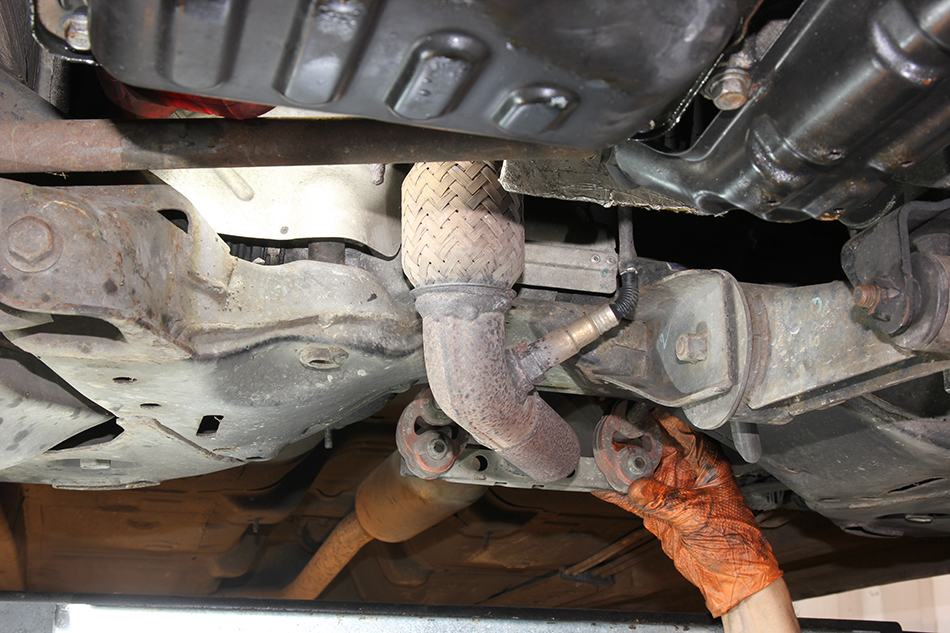
Flexi-sections
A flexible section of an exhaust helps to provide some movement in the system and reduce the risk of fractures. However, if the flexi-section leaks, it’s not so easy to fix. Replacing it is often the only answer.
Large exhaust system holes
A large hole in an exhaust system isn’t so easy to fix with a bandage, exhaust paste or anything else. In most cases, the only answer is to replace that section of the exhaust system.
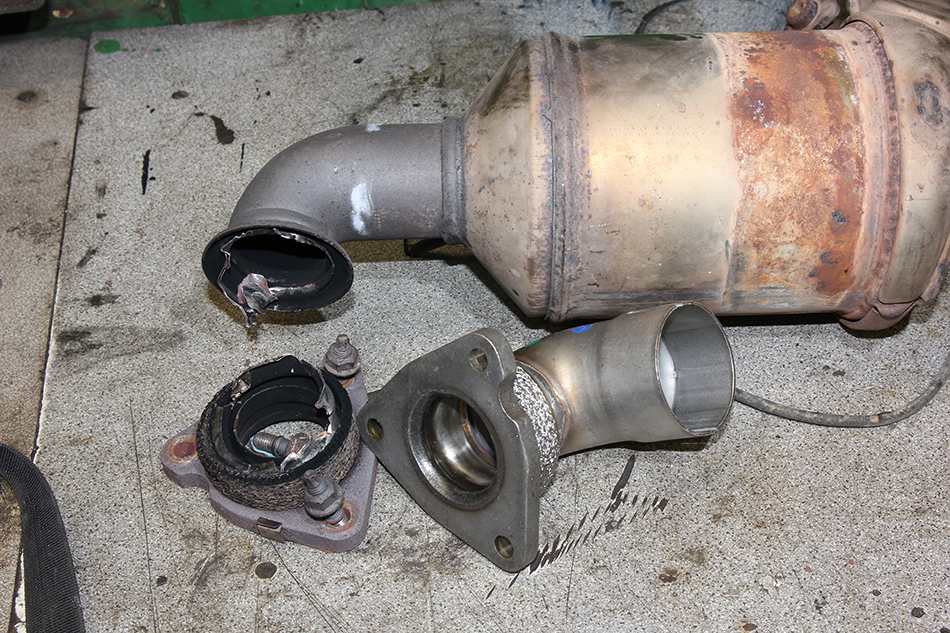
Repair exhaust sections
Common problems with some exhaust systems have resulted in repair sections becoming available. This often arises on an expensive component, such as a catalytic converter or DPF. If it’s common for a connecting end to corrode and break, then a repair section may be available. This will usually involve removing the component to fit the repair.
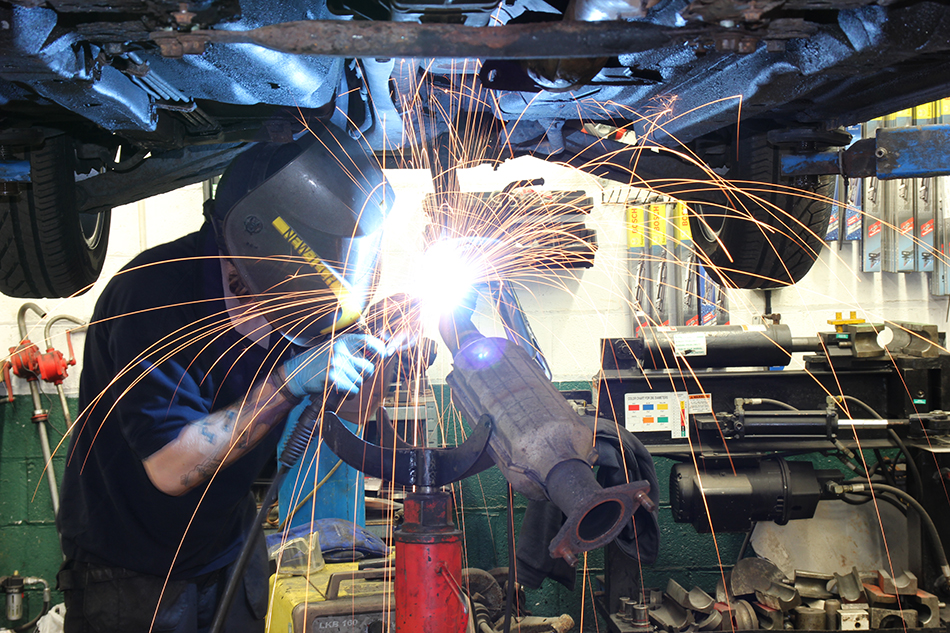
Welding repairs
We don’t recommend welding repairs of an exhaust system in situ unless you know what you are doing. Or you ask a professional to do the work for you. On petrol engine cars, the fuel in the tank is a major fire risk. Plus, there are electrics, including an ECU and a battery that can get damaged.

